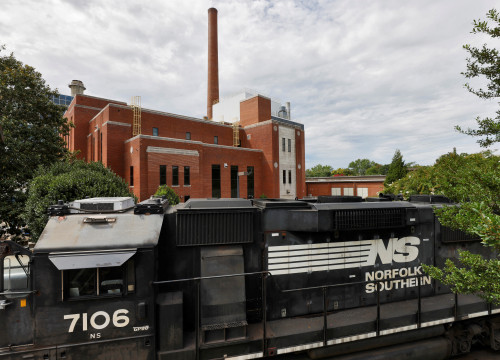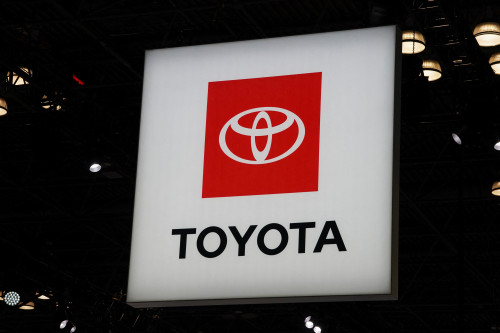By Sabrina Valle
(Reuters) -Union Pacific, the largest U.S. railroad operator, said on Thursday it is in advanced talks with rival Norfolk Southern, signaling that a deal to form a $200 billion coast-to-coast rail company could be close – and potentially trigger further consolidation among remaining freight rail giants.
The combination, which would be the largest-ever buyout in the sector, would create the first modern West-to-East single-line freight railroad in the United States, significantly affecting how goods from grains to chemicals to autos move across the country.
The talks have also prompted competitors BNSF, owned by Berkshire Hathaway, and CSX to explore merger options, people familiar with the matter said.
Agents at the U.S. Surface Transportation Board, the federal regulatory agency overseeing railroads, are already conducting preparatory work, anticipating they could soon receive not just one, but two megamerger proposals, a person close to the discussions said.
If completed, the deal would combine Union Pacific’s dominant position in the western two-thirds of the U.S. with Norfolk Southern’s 19,500-mile network spanning 22 eastern states. Union Pacific said there were no assurances that an agreement would be reached.
Critics warned that creating two railroad giants could drive up shipping rates. Union Pacific and BNSF dominate the West, while Norfolk and CSX control the East.
Mike Steenhoek, executive director of the Soy Transportation Coalition, said many agricultural and other railroad shippers will be concerned about decreased competition.
“This could result in increased rates and diminished service,” he added.
TRUMP EFFECT
The fact that talks are advancing has surprised many in the rail industry and on Wall Street, who believed the highly concentrated market would not allow further consolidation.
But the talks show how thinking around antitrust issues has shifted under President Donald Trump’s administration. Such a merger was considered unlikely under former President Joe Biden’s administration, which was more aggressive in antitrust enforcement.
Executive orders issued by Trump to regulatory agencies aimed at removing anti-competitive barriers have opened the door to potential megamergers in the industry, sources said.
Since early 2025, the STB has signaled a more industry-friendly approach to merger reviews. Chairman Patrick Fuchs, appointed to the post in January by Trump, has advocated for faster timelines for preliminary assessments, a greater focus on competitive balance rather than blocking consolidation, and a willingness to enforce conditions post-merger rather than deny deals preemptively.
Even a more expedited review could take between 19 and 22 months, one person involved in the discussions said.
Analysts say any merger would face scrutiny from multiple federal agencies and require support from labor unions, who have long opposed consolidation, warning that such deals threaten jobs and risk disrupting rail service.
But a transcontinental railroad could also streamline freight movement across the U.S. by eliminating interline transfers at congested hubs like Chicago, said Barclays transportation analyst Brandon Oglenski.
The merger risks being approved under conditions that could erode its strategic and financial value, such as forced divestitures, open access mandates, or new regulations on intermodal freight, said Anthony Hatch, an independent transportation analyst at ABH Consulting.
“The impact on rates is not that straightforward,” Hatch said. “Existing railroads already have significant pricing power and regulators have power to challenge prices.”
The U.S. freight rail system already functions as two regional duopolies by point of origin, he said, which limits shipper choice within each region as most freight originates and terminates within one of these two zones.
Norfolk Southern shares edged lower in midday trading, while Union Pacific fell 4%.
CHALLENGES
The North American rail industry has faced challenges including volatile freight volumes, rising labor and fuel costs, and mounting pressure from shippers over service reliability.
Union Pacific is valued at approximately $138 billion, according to LSEG data. The company has been grappling with sluggish automotive volumes and volatile coal shipments as power producers shift to natural gas, which is shipped by pipeline.
Norfolk Southern, which is worth about $63 billion, is emerging from a turbulent period that included the ouster of its former CEO amid ethics investigations, a high-profile boardroom clash with activist investor Ancora, and a costly train derailment that set the company back about $1.4 billion.
The last major consolidation in the industry was the $31 billion merger between Canadian Pacific and Kansas City Southern, which created the first and only single-line rail network connecting Canada, the United States, and Mexico.
(Reporting by Sabrina Valle in New York, and Shivansh Tiwary in Bengaluru, Lisa Baertlein in Los Angeles; additional reporting by Mariam Sunny; Editing by Shailesh Kuber, Sriraj Kalluvila and Nia Williams)




